The headline of the Business Outlook section of the “The San Juan Star” dated Sunday, September 21, 1981 basically said it all: “Puerto Rican built plane soars through first tests.” Accompanying the text was a black and white picture, depicting the Ahrens AR-404 making a right to left low-level pass at 150 knots over the runway at Borinquen Field, in the first public flight of the new airplane.
The piece, written by Harry L. Friedman, the STAR Business Editor, stated that the airplane was “the first commercial aircraft built in Puerto Rico“, and that the FAA test flight engineer assigned to this particular aircraft was Dick Sliff, who had also had roles in the flight testing of several other airplanes, amongst them the Boeing 707, 720, 727 and the Lockheed Constellation and Electra. Regarding the airplane, Fridman declared rather enthusiastically the “She performed as she had been flying ten years!!!”
The public display of the aircraft consisted of take-offs and landings, as well as low passes for the assembled crowds. The copilot for this occasion was Harvey Knight, a former Royal Canadian Air Force pilot, former test pilot for the Canadair CL-44, and former pilot for the Canadian Prime Minister. His comments on the aircraft praised the excellent response to the controls, stability, acceleration, and the ease with which take-offs and landings were performed. Knight was then, the head of the Ahrens test flight department.
The Company’s president, Captain Peter Ahrens, estimated then, that about 1,000 Puerto Ricans would be working in building four Ahrens AR-404s per month, within the next four years. Sadly, upcoming events would prove him wrong.
Certification of the aircraft under FAA part 25 was expected to be completed by June or July of 1982, that is, about one year from building the prototype to get the certification, which was about three years short of the average 4 years for other commercial aircraft. The only other U.S. aircraft manufacturers at that time, under part 25, were Boeing, Lockheed and McDonnell Douglas. It was expected that certifying the AR-404 under this category, would not only enhance its marketability, but also the prestige for an aircraft built in Puerto Rico.
T. Weller Smith, Vice-president of Ahrens Aircraft World Marketing, Inc., of Atlanta, GA, and a former Lockheed executive, predicted that the exceptional short take-off and landing distances of this aircraft would have a strong effect on the airplane’s market among undeveloped countries, where there was already “marked interest being shown.” According to Mr. Smith’s words, the aircraft was capable of landing in less than 1,000 feet (approx. 333 meters) without the use of flaps or reversing propellers. “With flaps and engines in reverse it should be able to do the same, with a payload of 5,000 pounds and 1,000 pounds of fuel. Fully loaded to 18,500 pounds gross weight, it should take off within 1,500 feet.” The airplane would do this, Smith said “without the expensive wing slots and sophisticated equipment of the STOL airplanes.”
Aiming his guns at the obvious competitor at the time, Smith said “for example, the Lockheed C-130, which the U.S. Government has supplied to so many undeveloped countries, is a complicated, expensive and consumes 1,000 gallons of fuel per hour, versus less than 100 for the AR-404.”
The only other aircraft at that time, which could possibly compete in the same category and cost operating parameters, was the Shorts SDS-30 (which was being built in Ireland at that time), although it was priced about US$1 million higher than the AR-404, and was also more expensive to operate. The airplane’s original price, back in 1976, had been estimated at a little less than US$ 1 million per unit, but by the time the first flight tests had been performed, it had risen to about $1.75 million, due to variations depending on the specific equipment to be installed for each customer.
The designer of the AR-404, was Kim Ahrens, son of the company’s president, and both him and his brother Ed, the vice-president for production, were graduates of the Aeronautical Engineering School at Northrop University.
Although the company at that time declined to name prospective buyers, one customer, Sun International Airlines, based in Aguadilla, Puerto Rico, had already paid firm and non-refundable deposits for the first two production examples. Smith als mentioned that the company had also received inquiries from a fishing group interested in two of the planes, for fish spotting.
PRIDCO (Puerto Rico Industrial and Development Corporation) concluded in a study back in 1979, that there was a market for about 250 aircraft of this type (the 30 passenger range), in Central Africa, for the next 10 years, where the local airlines were still operating old equipment like the Douglas DC-3.
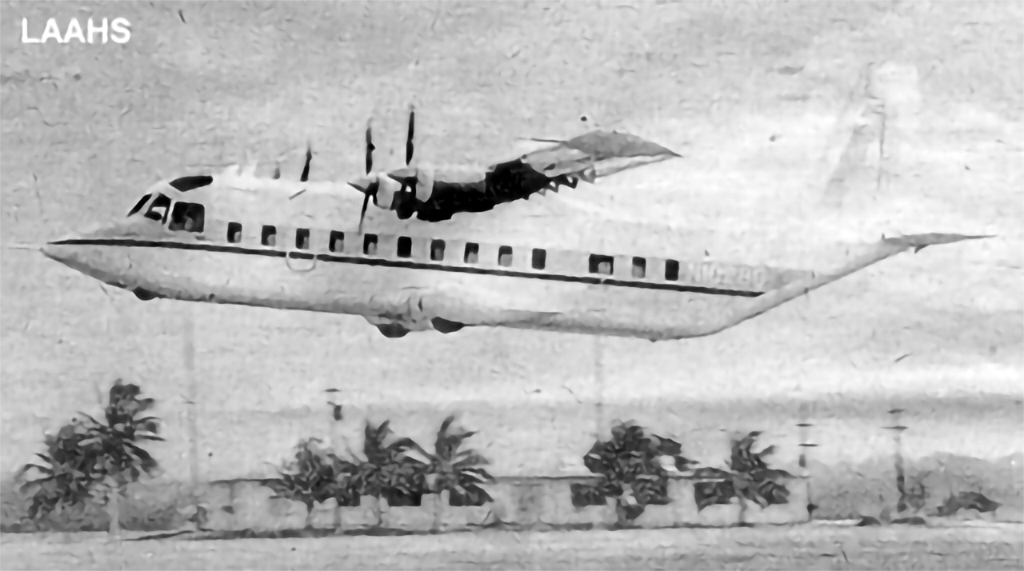
Variants
The Ahrens company projected the construction of specific models, to cover the needs as:
- General short range troop transporter.
- Ambulance, with capacity for 20 stretchers. (“This aircraft is ideal for flights longer than it would be feasible for helicopters, and faster, at a cruising speed of 190 knots.”)
- Naval Communications – personnel and cargo – for aircraft carrier landing capability (COD.)
- Gunship, a platform for a “Puff the Magic Dragon” modern Gatling gun carrier.
- Antisubmarine Warfare – Detection Role – “Electronic gear has become so compact, that larger aircraft are no longer needed. The AR-404 can cruise on two engines nearly 2,500 nm, or 14-15 hours, with a 12,000 pound gross weight at 10,000 ft. altitude.”
- Parachute troop and cargo drop plane, with full width cargo ramp at stern.
- Four engine transport pilot trainer, at one-tenth the fuel cost, or better, over full-size aircraft.
The Press Release
For a lack of a better descriptive name, I have called the following information, the “Ahrens Company Press Release.” It contains all the general information available at the time, on the status of the aircraft, as well as data on the expected performance of the aircraft. I have included this document in its original form, editing only the spacing between paragraphs.
AHRENS AR-404 TURBOPROP IN PERSPECTIVE
The STOL Ahrens AR-404 is an efficient turboprop transport with multiple variants for passenger, cargo, and military applications.
It is a high wing aircraft powered by four 650 h.p. Garrett turboprops, fitted with three bladed propellers.
Its square box-shaped fuselage design does not make it the most attractive liner in the sky, but economics make up for its superficial lack of appeal. In a recent study it was revealed that the AR-404 is superior in all of the most important categories–cost–to commuter airline operators when compared to six other popular aircraft in the 15 to 50 passenger range. They included the 15 passenger GAF AN-24 “Nomad,” 18 pax Swearingen Metroliner, 19 pax DHC Twin Otter, 20 pax CASA Aviocar, 30 pax Shorts SD330, and the 44-passenger DHC Dash-7.
The report states that the AR-404 is the least expensive in original cost per seat at $41, 000 versus $60, 000 for the Nomad and $75, 000 for the only aircraft directly comparable in terms of capacity, the SD330.
It also found the AR-404 had by far the greatest range of passenger seat-miles per gallon of fuel, at 51. The closest was the Metroliner at 34-1. The Dash-7 was listed at only 33.9 miles per gallon.
The Ahrens AR-404 is being built by the Ahrens Aircraft Corporation, a Company founded in 1976 by Captain Peter Ahrens, a very determined and resourceful man of Swedish ancestry. The assembly line of the AR-404 is located at their Borinquen Airport plant, which is located at Aguadilla, Puerto Rico. Borinquen Airport, with its two-mile long runway, used to be Ramey Air Force Base until recently. It was the home of a B-52 squadron for many years.
The Ahrens 404 can carry 30 passengers or 10,000 pounds of cargo, despite a gross take-off weight of only 24,000 lbs. It has a wingspan of 72 feet.
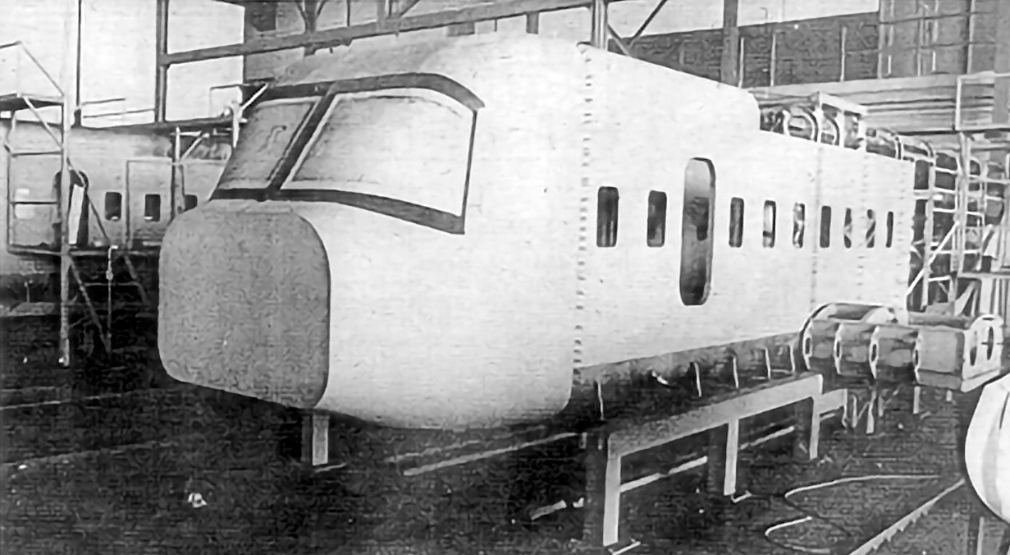
A twin engine version, with 1,000 horsepower turboprops especially developed for it by Garrett, is being projected as the next variant. It will be capable of carrying up to 4 tons of cargo at only 17,000 lbs. gross weight.
Being the first commercial production aircraft ever to be built in Puerto Rico, the $1.5 million AR-404 has been praised by many, including several FAA officials. William Black, the Federal Aviation Administration’s Resident Inspector, was quoted as saying that “the workmanship on that Aircraft, for a first attempt, is fantastic,” in view of the fact that 90% of Ahrens’ workforce had never worked on an airplane before.
The first example of this machine, serial No. 1, at presently carrying registration N404AR, has already flown and will be delivered to AERONAVES BORINQUEN in a very short time. This carrier, based at Borinquen Airport also, is owned by a small Midwest conglomerate which has ordered nine additional AR-404s.
Serials No. 2 and 4 are scheduled for delivery to SUN INTERNATIONAL, another local commuter carrier with routes to the Virgin Islands.
AIR BAHIA, a California commuter airline which services the Southern California and the Mexican Pacific coast, has placed an order for four aircraft. Serial No-3 is destined for this carrier. Besides these mentioned, many other commuter carriers have expressed interest in the AR-404 and placed options.
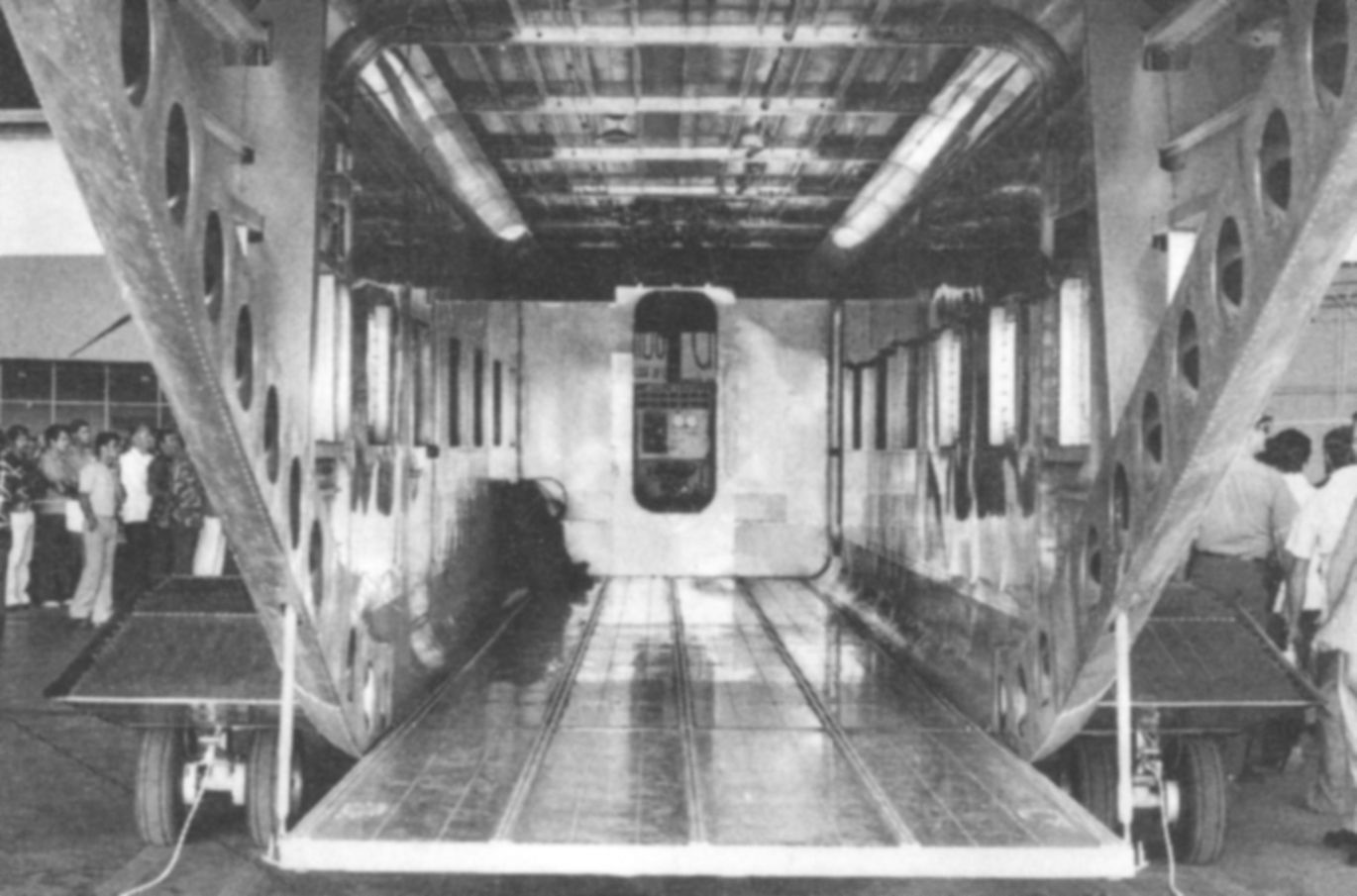
The Ahrens Aircraft Corp. is currently working toward certification by the FAA. The AR-404 is expected to be certified airworthy any time now and as soon that is achieved, its prestige will increase and deliveries will take place. The manufacturer expects to be delivering one plane per month during the first year, and eventually four per month.
The Ahrens AR-404 contains 329,000 individual parts, 125,000 rivets and some 30,000 feet of communications wire.
The Debacle
The company, which had an airplane with an excellent reputation to that point in time, having one prototype already flown, and three examples nearing completion, saw the future becoming darker and darker, a victim of a combination of forces.
Ahrens Aircraft Company was seeking a US$7.5 million loan from a private local (Puerto Rican) lender. Red tape however, slowed the process to a standstill.
The already approved loan, could not be disbursed by the lender to Ahrens, until an Economic Development Administration (EDA) loan guarantee was released. This guarantee, also approved, was held because of a mysterious five month “investigation,” by the U.S. Department of Agriculture, through its Inspector General’s Office. People there, claimed to have found irregularities with the internal operations at Ahrens. After five months, none of the Ahrens executives had been questioned, and reports at the time indicated that they hadn’t even been contacted by the U.S. Government in relation to the investigation.
Since the continued activities of the Ahrens company and all what was at stake for the economic development in Puerto Rico, different agencies, including Fomento Económico, PRIDCO, and the Governor’s office, intervened and tried to help Ahrens by requesting that the Inspector General’s office expedite the probe and gave the case priority.
None of the agencies involved, including the Defense Department, the Commerce Department or the Secretary of Agriculture at that time, were able to find out what the specifics of the investigation were, or more important, why. The Inspector General’s office being so independent and apparently unanswerable to no one, not even the Secretary of Agriculture, kept going at their own pace, with the probe no one knew what involved.
The Business Editor of the San Juan Star, Mr. Harry Friedman, managed to contact the inspector general herself, Mrs. Margaret Gates, and when he conveyed to her the importance of a prompt conclusion to the probe, given the economic impact it was having with Ahrens, her answer was in typical bureaucratic fashion: “Oh, they will be contacted in two or three weeks.”
All the obstacles, the foot dragging, the absence of concrete answers, the lack of a specific reason for the probe, led to many of those involved in the Ahrens project, to conclude that there were forces behind the scenes, which were interested in killing the Ahrens AR-404.
Mr. T. Weller Smith, an Ahrens Company executive, and a former Lockheed executive, pointed that the Ahrens was certainly going to compete with the Lockheed C-130 in many of the roles the famous “Herk” performed, but essentially, at a lower cost, and with a much simpler aircraft.
Third World countries, where currency for foreign purchases is usually in short supply, would, of course, look favorably at spending around $1.5 million per Ahrens aircraft, versus approximately $12.5 for a Hercules, while at the same time, they were going to get basically the same performance.
Did Lockheed kill the Ahrens project? Their answer has been no. Did someone in their pay, within the Government, apply so much pressure that the project was delayed, and the company had to declare bankruptcy? Was someone collecting on old favors, or calling in chits from people with something to hide in their closets?
With what we know about the way the politics in the U.S. work, that wouldn’t be so farfetched. We know that financial interests have always managed to sway not only politicians, but also bureaucrats. After all, it is not the a Cabinet Secretary who will make the final decision in most cases, but usually it is a second or third tier faceless bureaucrat, who knows the ins and outs of rules and regulations, who has his or her finger on the kill button, and who has many times, ended projects of benefit for different communities, without having to answer to anybody for their actions.
Thus, because the probe took forever to be completed, the credit was not available when it was needed the most, and Ahrens was forced to shut down. No airplane factory in Puerto Rico. No thousands of direct and indirect jobs. No versatile competitive aircraft in the market.
What I find most interesting, though, is that as good as the airplane really was -not only on paper, but also according to those who flew it- there has not been any new attempts to manufacture the airplane, maybe in a different country.
I discovered also, that next door (that is, next hangar) to where the Ahrens factory was located, the DeLorean Car company was also manufacturing vehicles. My memories about the DeLorean are very vague, but I recall that there was some involvement of drug money associated with the raising of the funds necessary to manufacture the cars. Was this fact considered as a kind of guilt by “neighborly” association? Was something more sinister behind the scenes at Ahrens? What was the final conclusion of the probe? The results of the probe are unknown to me at this point in time. I haven’t been able to secure a copy of that document, and I ignore if it still exists, somewhere.
My attempts to contact Captain Ahrens, Weller Smith, and a the Business Editor of the San Juan Star, Mr. Friedman, got me nowhere. E-mails and letters received no answer. Considering that the events described here occurred several years ago, and that no one might want to talk about what really happened, at this point in time we ignore what really happened to the Ahrens Company. My E-mails to the Department of Agriculture have not been answered yet, and the same goes for the inquiries with Lockheed. Who knows, someone might pick up the design again and modernize it, and still be competitive and we will see a new multi-role airplane crossing the skies over the undeveloped nations of this planet.
A Sad End
Every time I meet someone for the first time, I try to make sure they know that I am very interested in aviation. I usually ask if they have any old pictures, stories or experiences they would care to share with me. Most everyone will do is say: “Yeah, have some old pictures, let me see if I can find them.” This is the last I usually ever hear from most people about the theme.
However, some 25 years ago or so, when talking to Luis Blay, one of my coworkers, he offered what I then thought would be the 1,000th repetition of the same story. Yes, he had some stories, he had flown many times from Puerto Rico to the Virgin Islands and other neighboring Islands, in many different aircraft, mostly C-46s, DC-3s, etc., he had witnessed the loading up and take off of the aircraft in which baseball legend Roberto Clemente lost his life, and he had also witnessed the flight testing of an airplane built in Puerto Rico. Yes, he knew the guy who developed it. Yes, he had pictures somewhere. Fast forward to July 23, 1998, when to my surprise, he produced three pictures taken 3 weeks earlier by his sister, Mrs. Margarita Blay, at Aguadilla, Puerto Rico.
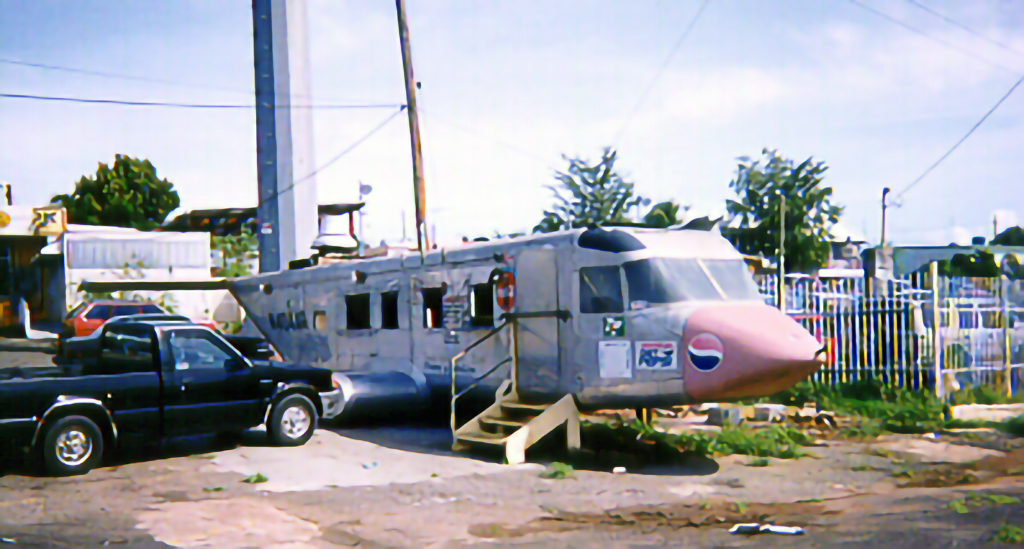
The subject on these pictures is what is left of the Ahrens AR-404 c/n 1, registered N404AR. The fuselage, now just an empty hulk, was sitting in a parking lot, on its belly, no wheels. It had been converted to a fast food kind of place, selling typical Puerto Rican snacks and sandwiches. Prominent in the nose area were ads for Pepsi-Cola, Coca-Cola and Seven Up, coexisting peacefully in the fuselage, where evidently the cola wars have not taken place. The fuselage also sports advertisement for “Flanes y Gelatinas” (Custard and Jell-O)!! According to what Luis told me, the plane had been towed on its gear, for about 20 miles from the airport, to its final resting location. A concrete foundation has been poured to sit the fuselage on. WIth no wheels, it had been stabilized by a metallic support placed right behind the wheel well area.
My first impression when I saw the first picture was that because of the landing gear arrangement, the aircraft resembled closely the layout of the Australian built GAF Nomad. The fuselage had two sponsons to tuck the wheels in, once airborne and it was sitting there sans wings, engines or vertical surfaces, although the elevator was still in place. The main wing was “shoulder mounted” (a high wing.) Luis says that the airplane ran on 4 engines, possibly turboprop. The rear of the aircraft looks a’la Hercules C-130/CASA 212, where at the back of the fuselage there is a ramp which evidently could be lowered to load the airplane. Fuselage is boxlike, resembling the Short Skyvan. There is a smoke/grease evacuator on top of the fuselage, behind the area of the landing gear, evidently installed for when the restaurant was in operation.
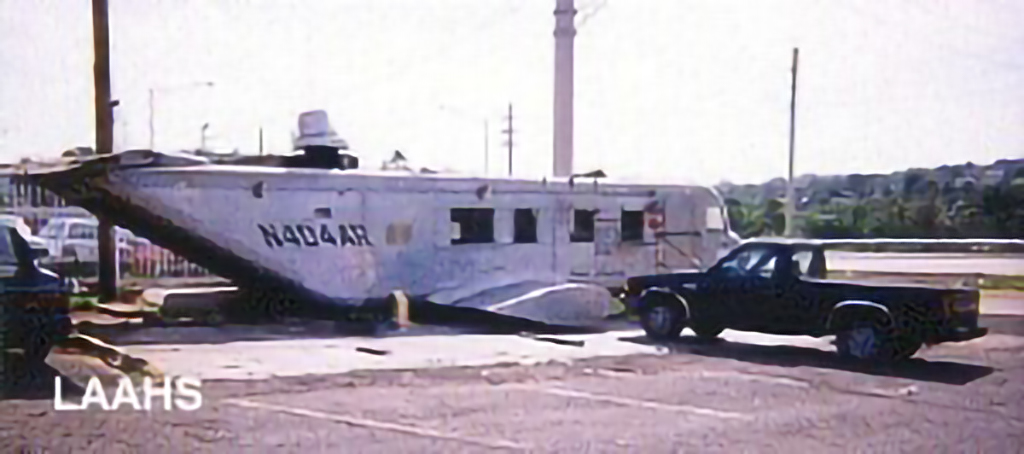
The cockpit area still has in place all the windows/glass. Two blisters on top of the pilots positions provided good visibility. The nose of this particular aircraft is finished on a reddish material, possibly fiberglass, and this is where apparently the instrumentation and possibly radar, would have been located. The fuselage has been modified, where one of the windows was, an opening is now covered with slats, evidently for ventilation purposes. There is a rough, wooden three steps ladder so customers could approach the service window for their meals.
The registration N404AR is clearly visible, in black lettering, in the rear, right hand side of the fuselage. What would have been the door on the right side, is now covered with a metallic door, closed from the outside by means of a crossbar, secured shut with a padlock.
There was a lot of debris on ground, on the left side of the airplane. Evidently, the business which ran in there, is no more. The fuselage looked abandoned. A piece of Puerto Rican aviation history was left there, until someone would “wisely” decide to get rid of it, sell it to a metal scrap dealer, or simply destroy it. That would be a shame. This airframe should be saved, restored and placed in its rightful place for future generations as a true piece of aviation history. Puerto Ricans should be ashamed to permit that part of their heritage was so carelessly tossed by the wayside. Who knows, maybe by seeing it, a child could decide to become an aeronautical engineer and benefit all of us with amazing designs.
Acknowledgments
This brief introduction to the airplane which could have been, was possible because of the help provided me by the following individuals: Luis Blay and his sister, Ms. Margarita Blay. Without his recollections and his kind interest, I would have never found that the Ahrens still existed. Thanks are due to Ms. Blay for taking the time to go and snap the color shots which help me illustrate this article.
To Dr. Gary Kuhn because he provided me with the first technical data regarding the AR-404 and also a copy of an article on the subject, from a now defunct aviation magazine. As usual, his vast knowledge on Latin American aviation and his enthusiasm for the subject, have made the difference and helped me in no small measure, to make this article a reality.
The core of this story was provided by an article written by Klaus Aceves, on the Airline and Modeling Review, Vol. 1, Nr. 2, Winter of 1980. The article is titled: Who is Behind the Ahrens AR-404 Probe?
And last, but not least, thanks are due to my electronic friend, MSGT. Angel M. Ruiz-Pagan, (PRANG) who provided me with the copy of the “San Juan Star’s” Business Outlook mentioned above. Angel is actively seeking pictures for his projected book on Latin American Air Arms, so all you guys out there, help him out, will you? He is one of the good guys!

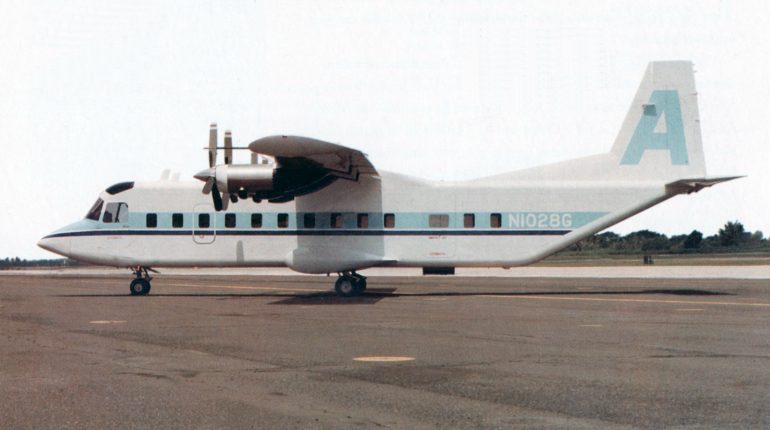


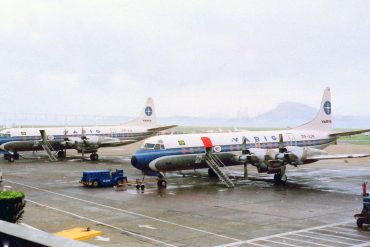
Great article! Thanks Tulio R. Soto! Some years ago I’ve made an inquiry in all AR-404 built and their fates! It was interesting to notice that at that time all five aircraft could be traced by photos!
To my knowledge only 3 aircraft were registered, N1020G which was the only one that flew (49,5 flight hours according to FAA records) and ended up at Dr Hammargren museum in Las Vegas, and N1028K and N1028 N.
Fascinating article about an aircraft that I had never heard of.
Interesting reading. As a matter of fact there was a following on story of mr Ahrens project in Sweden during the years 1983-1987 designated the KM-180. Also that project was terminated for various reasons. I was certification manager for this project at the Swedish Civil Administration and have written a story of it in the magazine of the Swedish Aviation Historical Society #4 , 2013. It is in Swedish but at least you may appreciate the pictures. I can send a pdf copy of the article if I get an e-mail address.
I also have access to videos from som of the test flights of the Ahrens 404B in Pureto Rico. The first a/c reg # N1028G ended up in at Dr Hammargrens museum.
Drop us a note via our “Contact Us” page and we’ll get back to you!
Hej Ingemar. Jag heter Hubertus Obst och är en släkting till Peter Ahrens, d.v.s PA:s fru är min moster. Jag kom 1955 från Östtyskland till fam. Ahrens då boende utanför Säffle. Jag har precis skrivit 6 korta artiklar om fam. Ahrens och deras liv från 1950 – 2013. Artikel Nr. 7 skall just avhandla KM- 180. Jag är mycket intresserad av att komma i kontakt med dig. Mitt telefon är +46 702703059, email: hubertus.swe@gmail.com, jag finns på FB under Hubertus Obst Arboga. Jag kan gärna skicka dig de fem första artiklar om jag får din e-mail adress. Varken Peter Ahrens, Ursula Ahrens eller Kim Ahrens finns kvar i livet. Med vänlig hälsning Hubertus Obst
Dr Hammargren museum is in Las Vegas